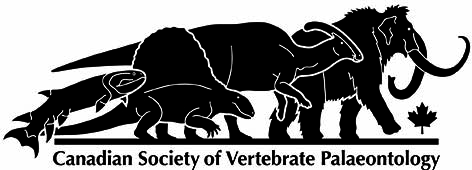A caenagnathid oviraptorosaur metatarsal from the Mesaverde Formation (Campanian), Wyoming
DOI:
https://doi.org/10.18435/vamp29376Abstract
A well-preserved left theropod metatarsal I from the Campanian Mesaverde Formation of Wyoming is described and identified as belonging to a caenagnathid, representing the first occurrence of this clade from the formation. The specimen is unique in being relatively small, but featuring a suite of characters (triangular shaft, less constriction between the shaft and the distal condyle, spherical distal condyle) that are seen in larger examples of Caenagnathidae such as Anzu wyliei or “Macrophalangia canadensis”. This suggests that the previously-observed differences in metatarsal I between small and large caenagnathids are not solely the result of allometry, but may represent phylogenetically informative variation. Although limited, this new specimen lends some support to the hypothesis that “Macrophalangia canadensis” does not represent a large Chirostenotes pergracilis. Furthermore, the specimen is important in establishing the presence of caenagnathids within the Mesaverde Formation fauna, in which theropod remains are poorly known.
Downloads
Downloads
Published
How to Cite
Issue
Section
License
Copyright (c) 2021 Chan-gyu Yun, Gregory G. Funston

This work is licensed under a Creative Commons Attribution 4.0 International License.
Submission of an article to Vertebrate Anatomy Morphology Palaeontology will be taken to mean that the article is an original work and not previously published or under consideration for publication elsewhere.
If the article is accepted for publication, it will be published on-line under Creative Commons Attribution 4.0 International (CC By 4.0) meaning:
Attribution — You must give appropriate credit, provide a link to the license, and indicate if changes were made. You may do so in any reasonable manner, but not in any way that suggests the licensor endorses you or your use.
No additional restrictions — You may not apply legal terms or technological measures that legally restrict others from doing anything the license permits.






